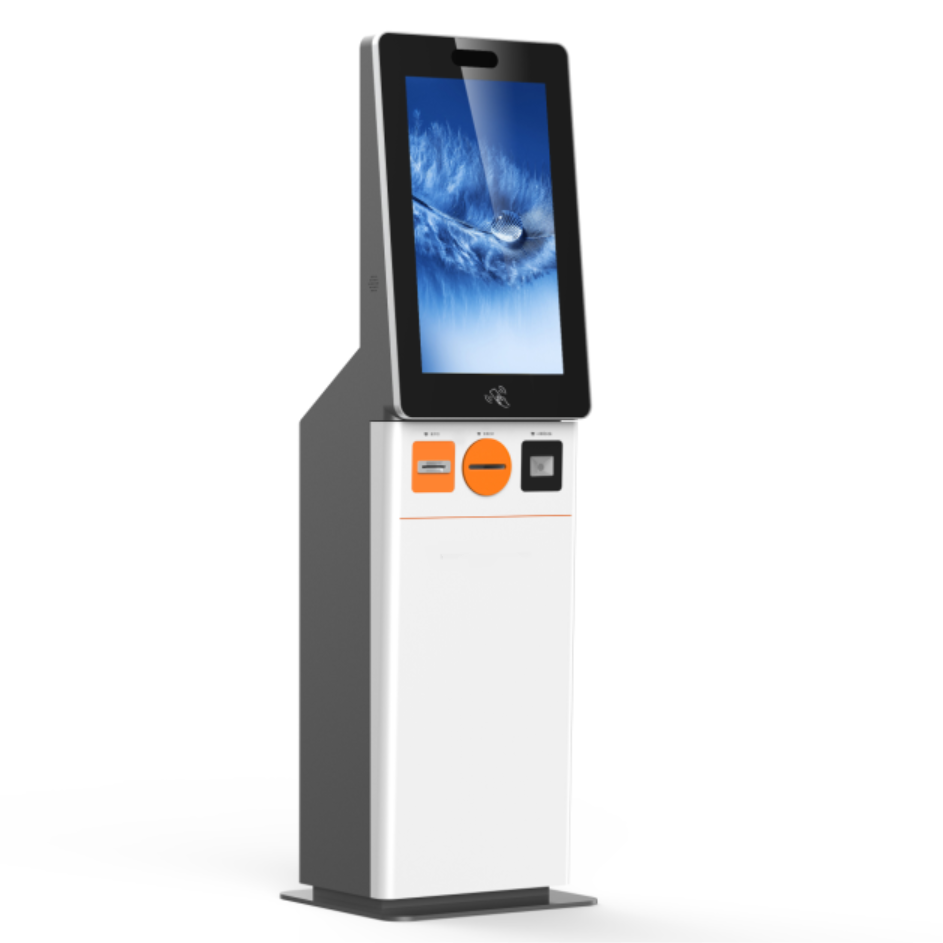An interactive kiosk is a self-service device equipped with a digital touchscreen interface and various input methods to facilitate user interaction and provide a wide range of services and information. These kiosks are designed to enhance user engagement and convenience by allowing users to perform tasks such as information browsing, ticketing, payment processing, and more. Interactive kiosks are commonly used in retail environments, public spaces, transportation hubs, healthcare facilities, and entertainment venues to improve user experience and operational efficiency.

Industry Uses:
1. Retail: Assist customers with product searches, inventory checks, price comparisons, and self-checkout processes.
2. Public Services: Provide access to government services, information dissemination, and self-service options.
3. Transportation: Offer ticketing services, real-time travel information, and interactive maps for navigation.
4. Healthcare: Enable patients to check in for appointments, access medical information, and manage prescriptions.
5. Tourism: Provide information on attractions, electronic guides, ticketing services, and local event details.
6. Entertainment: Display event schedules, ticket sales, interactive exhibits, and promotional content.
7. Banking: Allow users to perform transactions, check account information, and access financial services without the need for a teller.
1. Enhanced Engagement: Offer intuitive and engaging interfaces that encourage user interaction and participation.
2. Efficiency: Reduce wait times and improve service speed by providing quick access to information and self-service options.
3. User-Friendly: Provide clear and straightforward navigation, making it easy for users of all ages and tech skills to operate.
4. Versatility: Support a wide range of applications and services to cater to various industry needs.
5. Real-Time Information: Ensure the accuracy and timeliness of the displayed content by providing real-time updates.
6. Cost Savings: Minimize the need for staffed service points, thus lowering operational costs and enhancing resource allocation.
1. Touchscreen Display
- Central to user interaction, allowing users to navigate menus, enter information, and access services. High-resolution and responsive capacitive touchscreens are commonly used for a seamless experience.
2. Processor
- Powers the kiosk's operations and applications, ensuring smooth performance and quick response times.
3. Network Connection Module
- Enables wired and wireless connectivity to ensure real-time communication with backend systems and provide up-to-date information.
4. Printer
- Used for printing receipts, tickets, and other necessary documents.
5. Barcode Scanner
- Allows users to scan barcodes for product information, ticket validation, or identification purposes.
6. Card Reader
- Supports the reading of magnetic stripe and chip cards for payment processing, access control, and identity verification.
7. RFID Reader
- Used for scanning RFID tags in applications such as inventory management and secure access control.
8. Camera
- Utilized for security, facial recognition, and interactive applications that require image capture.
9. Audio Output Devices
- Provide audio feedback, voice prompts, and multi-language support to assist users and enhance accessibility.
10. Durable Enclosure
- Protects internal components from physical damage and unauthorized access, often designed to withstand heavy usage and varied environmental conditions.
1. Operating System
- Commonly used operating systems include Windows, Linux, or Android, providing a stable platform for application development and device management.
2. Application Software
- Custom-developed software that controls the kiosk’s functionality, including user interface, data processing, and service delivery. Designed to be modular for easy updates and feature expansion.
3. Backend Management System
- Monitors and manages the kiosk fleet, collects usage data, performs content updates, and ensures proper maintenance. Offers remote access for real-time management and troubleshooting.
4. Database System
- Stores critical data such as user interactions, transaction records, and system logs. Popular choices include MySQL, PostgreSQL, and other reliable database solutions.
5. Network Communication Module
- Facilitates secure data exchange between the kiosk and backend systems using TCP/IP protocols, with options for VPN and other encryption methods to ensure data integrity.
6. Security Module
- Includes firewalls, encryption tools, and authentication mechanisms to protect user data and prevent unauthorized access.
7. Interface Module
- Provides seamless integration with external systems such as payment gateways, content management systems, and customer relationship management (CRM) platforms to enhance service delivery and data sharing capabilities.